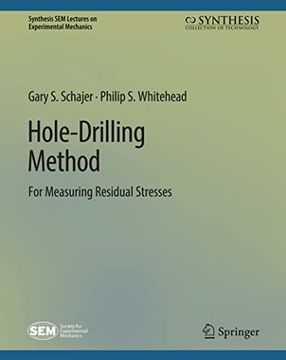Synopsis "Hole-Drilling Method for Measuring Residual Stresses (in English)"
This book describes the theory and practice of the Hole-Drilling Method for measuring residual stresses in engineering components. Such measurements are important because residual stresses have a "hidden" character because they exist locked-in within a material, independent of any external load. These stresses are typically created during component manufacture, for example, during welding, casting, or forming. Because of their hidden nature, residual stresses are difficult to measure and consequently are often ignored. However, they directly add to loading stresses and can cause catastrophic failure if not properly included during engineering design. Thus, there is an urgent need to be able to identify and measure residual stresses conveniently and reliably. The Hole-Drilling Method provides an adaptable and well-proven method for measuring residual stresses in a wide range of materials and component types. It is convenient to use and gives reliable results. Because of the hidden nature of residual stresses, the measurement method must necessarily be indirect, thus, additional care and conceptual understanding are necessary to achieve successful results. This book provides a practical introduction to the Hole-Drilling Method, starting from its historical roots and going on to focus on its modern practice. The various chapters describe the nature of residual stresses, the principle of hole-drilling measurements, procedures and guidance on how to make successful measurements, and effective mathematical procedures for stress computation and analysis. The book is intended for practitioners who need to make residual stress measurements either occasionally or routinely, for practicing engineers, for researchers, and for graduate engineering and science students.

